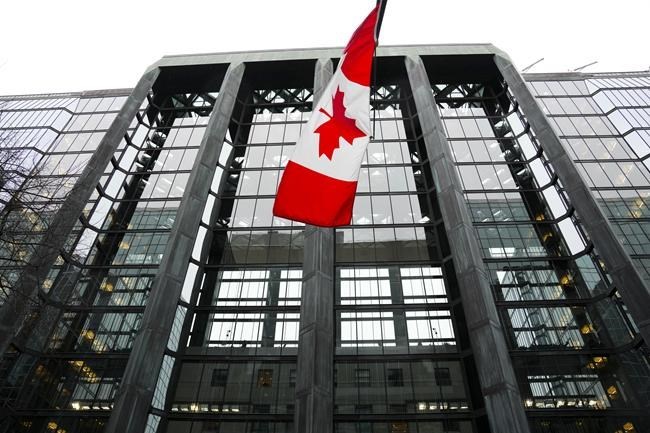OTTAWA ‚Äî After announcing a rate hike this week, Bank of Canada deputy governor Paul Beaudry says the central bank plans to take future interest rate decisions one at a time.¬Ý
Beaudry made the comments in a news conference on Thursday, which followed a speech he delivered to the Greater Victoria Chamber of Commerce.
The deputy governor's public appearance comes one day after the central bank announced it was raising its key interest rate by a quarter of a percentage point, ending its pause on rate hikes and bringing the rate to 4.75 per cent.
The move fuelled speculation among economists that another rate hike is on the way next month, but Beaudry said nothing is predetermined.
"Every decision is taken one at a time at this point," Beaudry said.
"There's a set of data that we'll be looking at, we made that clear. And then we let the markets make their bets."
The decision to raise interest rates again wasn't completely unexpected, given a recent string of hot economic data. But some economists had expected the central bank to wait a little longer to get more data before hiking rates again.
In an interview with The 91‘≠¥¥ Press, Beaudry said the Bank of Canada is facing difficult decisions amid economic uncertainty, which means its moves may surprise people at times.
"When we have difficult decisions ... you take a jump at some point," Beaudry said.¬Ý
"It's going to surprise some people."
Earlier this year, the Bank of Canada announced it was pausing its rate-hiking cycle to account for the lag that exists between interest rate increases and their effects on the economy.¬Ý
But economic data released since April “tipped the balance” for the central bank in favour of raising interest rates again, the deputy governor said in his speech.
‚ÄúWe've had an accumulation of evidence ‚Äì on many fronts, over time and across a whole set ‚Äì that tell us that inflation seems to be more sticky and it's going to be harder to get it down to that two per cent," Beaudry said.¬Ý
"It's that accumulation of evidence that brought us to our (rate) decision."
Most economists estimate the lag between a rate hike and its economic impact is somewhere between one and two years. The majority of the Bank of Canada's rate hikes happened less than a year ago, raising the question: why hike rates again?¬Ý
The deputy governor, who will be leaving his position next month to return to his academic position at the University of British Columbia, said the central bank thinks the economy is too overheated, even when it takes the lags into consideration.¬Ý
"We take into account all those lags, and what we should expect given the lags, and things were kind of more persistent," Beaudry said.¬Ý
In his speech, the deputy governor says stronger growth, a tight labour market, and a rise in inflation in April suggest interest rates were not high enough.
Last week, Statistics Canada reported real gross domestic product grew at an annualized rate of 3.1 per cent in the first quarter.
Beaudry said the rapid rise in consumer spending took the central bank by surprise, while buyers appear to be returning to the housing market.
Progress made on the inflation front was also slightly reversed in April, as the annual rate ticked up to 4.4 per cent.
Meanwhile, the labour market has remained remarkably resilient, with an unemployment rate of five per cent.
“When we looked at the dynamics in inflation combined with excess demand, that really has increased the risk that we are not going to be able to get inflation down without a bit more monetary tightening,” Beaudry said.
This report by The 91‘≠¥¥ Press was first published June 8, 2023.
Nojoud Al Mallees, The 91‘≠¥¥ Press



